 This contemporary home located between Bethlehem and Jerusalem is wrapped in a Mashrabiya screen, which keeps the home nice and cool even on scorching hot days.
This contemporary home located between Bethlehem and Jerusalem is wrapped in a Mashrabiya screen, which keeps the home nice and cool even on scorching hot days.
We’ve lauded the benefits of ancient building techniques many times before. Both Hassan Fathy’s incredible mud structures in Egypt and ancient Syrian beehives are a model for sustainable design because neither require an air-conditioner to stay cool. But don’t worry. It isn’t necessary to live in a mud building or a cave in order to enjoy the benefits of passive design.
This 1700 square meter home designed by Senan Abdelqader is a contemporary stand out among the solid stone homes that typify architecture in the Palestinian village Beit Safafa located between Jerusalem and Bethlehem. It is wrapped in a mashrabiya – a latticed screen envelope on the outside of buildings that is not only aesthetically appealing, but also serves several practical functions.
The terraced home’s basement is tucked into the side of a steep slope. Natural lighting is facilitated with sunken courtyards that act as light wells. From this stout base emerges the rest of the home which is wrapped in a stone mashrabiya facade.
Stone is an excellent building material since it has superior thermal massing. In other words, it absorbs the heat of the day which can then be released at night when it is cooler. That being said, most of the stone being used in this region is Jerusalem stone – and its excess use exacts a steep environmental cost.
Set apart from the building, the pixelated envelope serves multiple functions: it circulates air to provide passive cooling, it deflects excess solar gain as well as wind and rain, and it allows just the right amount of diffused light to enter the home. This beautiful home also has a rooftop garden.
Arch Daily notes that Beit Safafa is on the precipice of rapid urbanization. If that is the case and it has to be, we at least hope that other homes in the region will look to Abdelqader’s sustainable leadership for inspiration.
:: Arch Daily
More Examples of Vernacular-Inspired Architecture:
Earth Architecture All the Way to Timbuktu
Hassan Fathy is the Middle East’s Father of Sustainable Architecture
The Epitome of Sustainable Architecture: 700 Year Old Iranian Caves
all images © Amit Giron

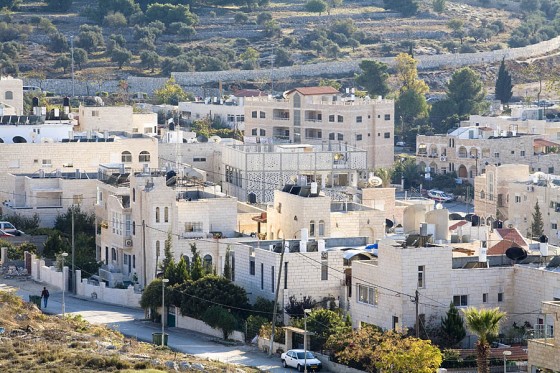
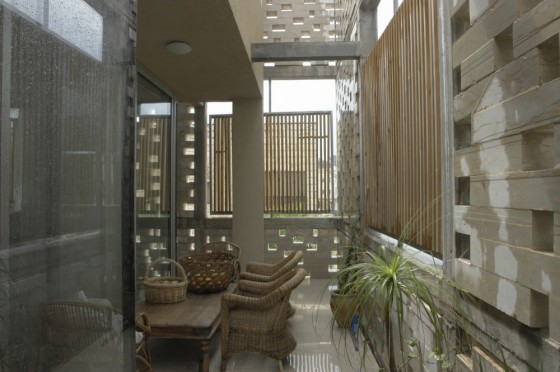
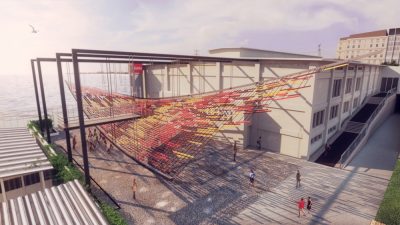
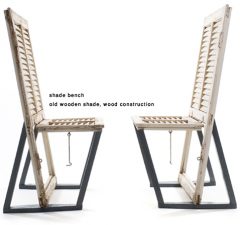
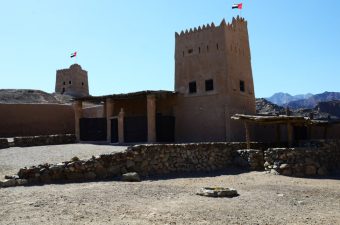
unfortunately architects and reporters that don’t know enough principles of bio-climatic design,reach to unrealistic conclusions and design forms! mashrabiya is a both climatic and cultural architectural element: reducing solar impact in hot arid regions and providing privacy for women looking out of the house.in this house the use of masharabiya seems to be decorative and as a means of cultural memory!the climate in beit safafa is cold in winter and cool in summer(there’s no scorching sun like in the desert!);so,a house needs to get as much as possible winter solar radiation and some shading by means of calculated overhungs in south and seasonal vertical shading devices in the west elevation only, such as masharabiya + well designed through ventilation for the summer period!
I don’t know why these techniques are not more widely implemented, architects need to learn about this. Informative article.
That’s a great point… and as you wrote elsewhere, it can probably be added to existing buildings in order to reduce their energy consumption!
I like how this space also offers a lot of privacy.